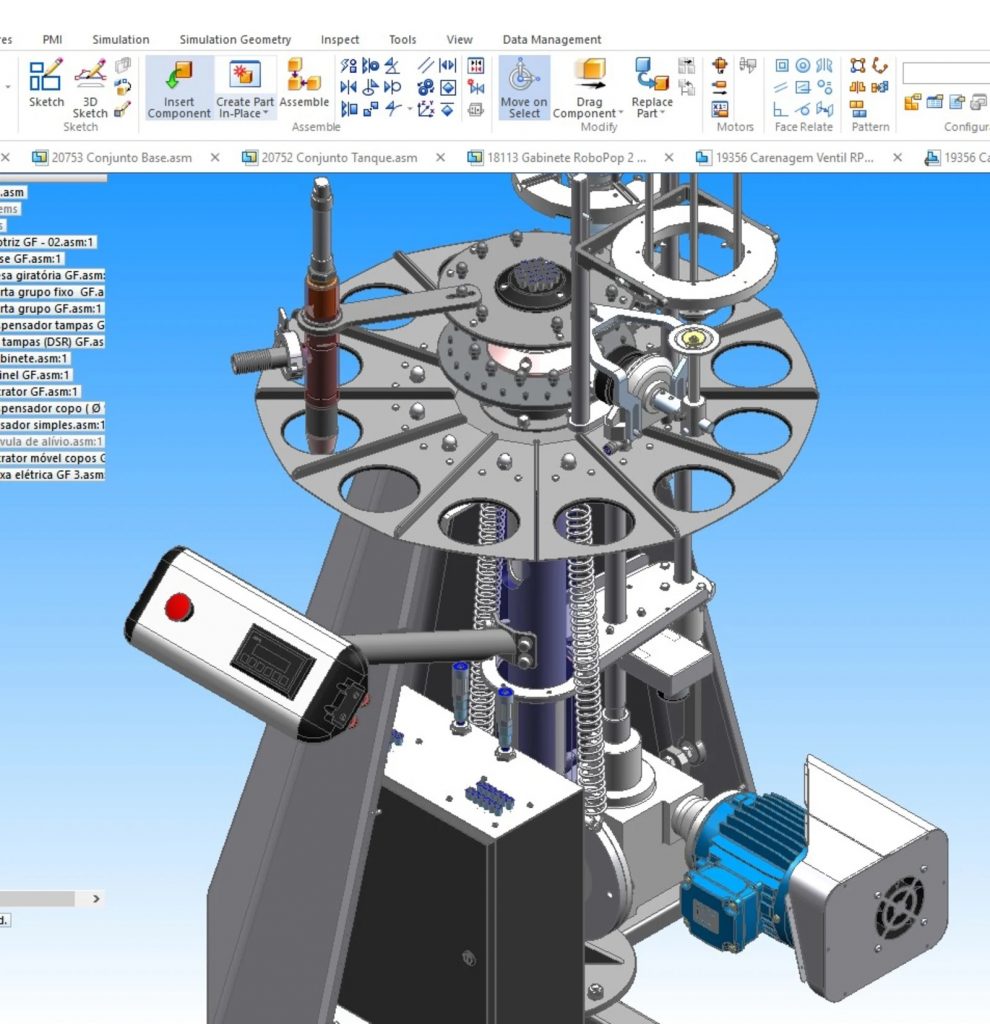
On a hot and sunny day, nothing tastes better than ice cream. Though most people probably never think about it, there’s a good amount of engineering that goes into producing that sweet and creamy treat.
Just look at Finamac™, a Brazil-based manufacturer of ice cream machines. Founded in 1985, Finamac™ has spent the last three and a half decades perfecting the art of automating ice cream. Today, the company has over 40 patents and sells dozens of different machines for making ice cream, gelato, ice pops (popsicles) and more.
Marino Arpino’s father emigrated from Italy to São Paulo, Brazil, in 1954. There, he started his own ice cream shop and developed artisanal ice cream machines in his spare time. The younger Arpino began his career as an aerospace engineer, but soon followed in his father’s footsteps. In 1985, he founded Finamac™ to develop his design for a new type of ice pop machine.

In 1988, at the age of 29, Arpino began building his first ice pop machines in the spare room of his house. His machines were successful, and today Finamac™ employs over 60 people, including three mechanical engineers, three electrical engineers, and three design technicians.
One of the company’s mechanical engineers is Guilherme Mello, a graduate of the University of São Paulo who’s been working with Finamac™ for the past two and a half years.
“We try to give our customers the possibility of doing their art, but also give them the safety and automation they need,” Mello said.
At first, ice cream doesn’t seem to provide the most fertile ground for innovation, but Finamac™ has made it so. The company has received funding from FAPESP, the São Paulo Research Foundation, a governmental agency that promotes disruptive projects. FAPESP provided funds for three Finamac™ projects, which led to the development of six new ice cream-related machines.
“Solar is disruptive. Electric cars are disruptive. What is disruption in the ice cream market?” asked Mello.
Finamac’s engineers developed a way to remove heat quicker and make popsicles faster, allowing this new machine to produce ice pops in just 30 percent of the time of traditional ice pop machines—up to 5,000 ice pops per hour.
“We have removed the liquid from the equation,” Mello explained. “With the use of additive manufacturing, we have found a way to cool the popsicles directly with the compressor. And what this means is there’s only one step in the heat transfer section, so we can go to a lower temperature and a much, much faster popsicle.”
Finamac™ is currently developing the project, with plans to sell the machine by 2021.
“We’re having some great results, and we already have working prototypes,” Mello said. “I have already eaten popsicles from it. It’s not a full machine yet, but we are going towards it by the end of next year.”
Finamac’s industrial design has also been lauded, with several of the company’s products receiving recognition from the Brazilian Agency for the Promotion of Exports and Investments (Apex-Brasil). Mello credits the design recognition to Finamac’s use of fiberglass, which is not only lighter and cheaper than steel, but also looks better than the traditional enclosures that made previous ice cream machines look boxy and utilitarian.

To assist in engineering its innovative ice cream machinery, Finamac™ has made a commitment to keeping pace with current technology. The ice cream company designs all of its machinery in Siemens Solid Edge, and has been using the platform since V1.

“We are technology driven,” Mello asserted. “We have already installed ERP and we have already gone through digitalization. We do not have paper files anymore. It’s 2019.”
Finamac™ has also begun using thermal and finite element analysis (FEA) simulations in the development of its machines. Though the company currently outsources analysis, it plans to bring simulation in house within the next few years. To stay within the Siemens software suite, Finamac™ plans to adopt both Amesim, for system analysis, and Fibersim, for fiberglass simulation, to assist in the design process.
Finamac™ plans to adopt more than just simulation software to facilitate its design workflow. The company is eyeing Solid Edge Electrical Design to provide a more holistic 3D workflow, and Solid Edge Technical Publications to help create manuals and documentation for its catalog of over 40 machines.
“We are looking this year at Solid Edge Electrical Design,” said Mello. “We have our own PLCs, but they are not fully integrated with the 3D models. That’s one thing that our electrical engineers have to do. They have to keep tweaking the 3D model and the 2D model to adapt to each other. And being able to do that in a single step would save us a lot of time.”

Finally, Finamac™ is looking to Industry 4.0 and the Internet of Things to make its ice cream machines go even further.
“One of the FAPESP projects involves IoT and big data,” Mello explained. “So, we will be able to collect data from the machines around the world and bring them back for preventative maintenance and so on.”
In 2015, Finamac™ launched a business unit in Miami, Fla., which takes care of customer service and finishing details. While the majority of Finamac’s manufacturing takes place in Brazil, certain elements of the finishing process are completed in the United States. However, the company plans to have its entire manufacturing process occur in the U.S. by the end of 2020.
Whether its an airplane, an automobile, or an ice cream machine, all products can benefit from the confluence of clever engineering and flexible design software. With a dash of industrial design and a pinch of engineering ingenuity, Finamac™ has made a tasty summer treat even tastier.
To learn more about Siemens Solid Edge, or to download a free trial, visit Siemens’ website.
Siemens has sponsored this post. All opinions are mine. --Michael Alba
Article originally published on Engineering.com